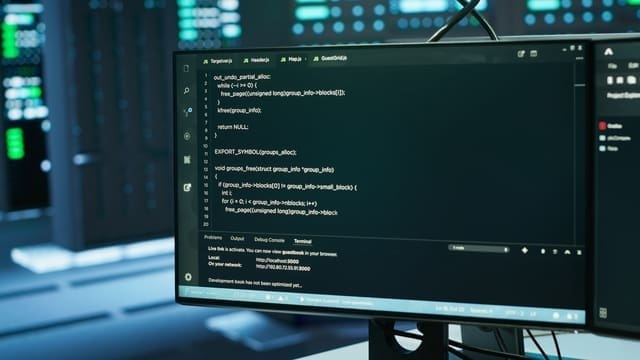Firmware security threats pose one of the most important yet overlooked vulnerabilities in our digital world. The first code that runs on a device during power-up can compromise the whole system’s security if attacked. Bad actors see this weakness as a perfect opportunity to launch sophisticated attacks.
Security teams face mounting pressure as attackers can compromise firmware in multiple ways. They either subvert existing functions or replace legitimate firmware with malicious code like UEFI rootkits. These threats prove especially dangerous because they bypass standard protection measures. A device’s firmware security needs an all-encompassing approach that covers the entire supply chain, unlike typical application vulnerabilities.
No system can claim perfect security. Secure software development practices and over-the-air firmware updates help address security bugs that surface after product shipment. The update management process needs careful design according to various NIST standards, including 800-147B and 800-193.
This piece will help you understand hidden firmware threats that bypass conventional security measures. You’ll learn about effective threat modeling approaches and secure development practices that protect systems from sophisticated attacks.
Firmware Attack Vectors That Evade Traditional Security

Attack vectors targeting firmware work below traditional security tools, which makes them incredibly hard to detect. What started as theoretical exploits has now turned into sophisticated ground attacks that completely bypass conventional protections.
UEFI Rootkits and Secure Boot Bypass
UEFI rootkits are powerful attacks that stay active even after you reinstall the operating system or replace the hard disk. Security experts found that there was a first-ever UEFI rootkit called LoJax in 2018 during a ground attack. This malicious code, tied to the Sednit APT group, could survive complete system rebuilds by embedding itself right into the firmware.
The attacks have grown more sophisticated. The BlackLotus bootkit emerged in 2023 as the first real-life exploit that could bypass Secure Boot by using a vulnerability in the Windows bootloader. Security experts found an even bigger threat with CVE-2024-7344, a vulnerability that affects most UEFI-based systems and lets attackers run untrusted code while the system boots.
SMM Exploits via System Management Interrupts
System Management Mode (SMM) runs at a privilege level above the operating system (often called “ring -2”) and has full access to physical memory and system resources. This specialized execution mode, built mainly for power management, has caught attackers’ attention.
Attackers can trigger System Management Interrupts (SMIs) in several ways. They might write specific byte values to I/O addresses like B2h and B3h to signal the SMI. Security experts have also showed how speculative execution attacks can expose protected SMM memory contents and bypass hardware-based range register protection.
A team found an SMM memory corruption vulnerability in an HP device in 2022 that let attackers write data to SMRAM. This vulnerability, once exploited, helped escalate privileges from ring 0 to ring -2. Attackers could potentially bypass security measures and plant persistent firmware backdoors.
BMC Firmware Hijacking in Data Centers
Baseboard Management Controllers (BMCs) let administrators control systems remotely, even when they’re powered off. These powerful chips have become prime targets in data centers.
A critical vulnerability (CVE-2024-54085) surfaced in AMI’s MegaRAC BMC software in 2024. It lets unauthenticated attackers take full control of vulnerable servers. Attackers can deploy malware remotely, mess with firmware, and possibly cause physical damage through over-voltage or permanent bricking of server components.
These attacks pack a serious punch because BMCs work independently from the main operating system. Traditional security tools don’t help much here. A compromised BMC can lead to persistent access, stolen data, or complete infrastructure takeover.
Malicious Code Injection in Option ROMs
Option ROMs contain initialization code for PCI and PCIe devices during system boot. These small firmware pieces give sophisticated adversaries another way to attack.
Attackers can use Option ROMs for malicious goals in different ways. To name just one example, see the LogoFAIL attack from 2023, which uses vulnerabilities in UEFI image parsers that show manufacturer logos during boot. Attackers can run any code they want in the UEFI environment by crafting malicious images and placing them strategically.
Thunderstrike offers another example. It targeted Apple MacBooks with Thunderbolt ports by exploiting Apple’s methods of validating, updating, and booting from the boot ROM. This attack needed just a moment of physical access to plug in a specially designed dongle, yet it could install an undetectable and permanent bootkit.
These sophisticated firmware attack vectors need an integrated security approach that goes beyond traditional protective measures and includes specific firmware-focused defenses.
Threat Modeling for Firmware-Level Risks

Image Source: Tech Design Forum
The life-blood of any firmware security strategy lies in threat modeling that works. Organizations can’t just react – they need to find vulnerabilities before attackers do. The NIST guidelines at [link_1] show how a formal threat model helps teams discuss system protection better. This becomes crucial as systems grow more complex.
Identifying Trust Boundaries in Embedded Systems
Trust boundaries mark critical points where program data or execution changes its trust level. These boundaries in firmware security show exactly where untrusted inputs might interact with privileged code. Embedded systems have unique traits that affect security implementations substantially, unlike traditional IT setups.
Embedded systems usually keep the same set of applications, processors, and communication paths. This makes it easier for system integrators to lock down configurations. Many embedded systems also run on their own with minimal human input, so they need reliable security measures that work without constant oversight.
Proper trust boundary mapping involves:
- Entry point identification: A list of interfaces where attackers might interact with the application or feed data
- Trust level assignment: Matching access rights with entry points and assets
- External dependency analysis: Looking at elements outside application code that could pose threats
Security teams can reduce attack surfaces at the firmware level by finding these boundaries and adding proper access controls where needed.
Documenting Security Exceptions in Development
Teams often make security trade-offs because of tight schedules or limited resources. A formal “Security Exception” document helps break this cycle of compromise and forgotten security goals.
Security exceptions clearly show gaps between what exists now and what security should be. This documentation helps in several ways:
Teams can see flaws they need to fix before deployment. They can plan ways to fix identified vulnerabilities. Best of all, the knowledge about security decisions stays with the organization even when people leave.
This structured approach creates a feedback loop that makes firmware security better with each product generation. Security exceptions become valuable lessons for future development instead of forgotten compromises.
Evaluating Threats from Debug Interfaces (e.g. JTAG)
JTAG and similar debug interfaces pose major firmware security risks that teams often miss. JTAG started as a tool for PCB testing and debugging, giving access to device internals through connected registers.
The CWE-1191 vulnerability talks about poor access control in debug/test interfaces. Attackers who get JTAG access could:
- See application data and memory contents
- Run unauthorized code or commands
- Change memory and application data
- Get past protection systems
JTAG runs separately from normal system operations. This makes it especially dangerous since attacks might not trigger regular security alerts.
Security teams must think over JTAG security in their threat models. Turning off the interface completely gives maximum security but stops legitimate testing and development. Most manufacturers add authentication systems or secure modes that allow controlled access while blocking unauthorized users.
Good firmware threat modeling needs more than just software security approaches. Teams must look at hardware interfaces, supply chain issues, and firmware-specific vulnerabilities that regular security programs don’t deal very well with.
Secure Firmware Development Lifecycle Practices

Security throughout a product’s lifecycle depends on resilient development practices. Research shows that 70% of all high-severity security vulnerabilities in C/C++ code come from memory safety issues. Teams need complete strategies to reduce these risks right from the start of development.
Memory Safety and Bounds Checking in C/C++
Memory safety vulnerabilities top the list of security risks in firmware development. C/C++ code’s undefined behavior creates critical security flaws such as buffer overflows, use-after-free, and pointer arithmetic bugs. The best practice requires developers to initialize variables, check bounds on arrays and buffers, and verify all inputs before processing.
Bounds checking might seem heavy on performance at first, but its security benefits are worth the overhead. C.A.R. Hoare’s experience with ALGOL 60 showed that customers never wanted to turn off runtime bounds checking. They knew these errors happened too often in production. Teams can isolate “unsafe” code within specific areas while keeping bounds checks everywhere else for performance-critical parts.
Static Analysis and Fuzz Testing for Firmware Code
Static analysis tools find potential vulnerabilities before deployment by examining source code without running it. Tools like CodeChecker use the clang static analyzer to find memory-related issues across translation units. The right configuration helps these tools spot uninitialized variables, null pointer dereferences, and memory leaks early.
Fuzz testing proves essential by creating thousands of test cases per second to find unexpected edge cases. Google’s OSS-Fuzz has found over 10,000 vulnerabilities and 36,000 bugs across 1,000 projects as of August 2023. Firmware-specific fuzzing needs special approaches because of hardware dependencies, non-x86 architectures, and custom firmware layouts.
Secure Code Reviews and Commit Signing Policies
Security-focused code reviews catch vulnerabilities that automated tools miss. Teams should review code before release, before updates, and again when new issues surface.
The code commit process needs protection against supply chain attacks. GPG or SSH signing for all commits ensures that only verified engineers can add code. This approach proves code origin and prevents attackers from sneaking malicious code into the CI/CD pipeline.
Managing 3rd-Party Libraries in Firmware Builds
Third-party libraries make up most of the code in firmware projects, which increases security risks. Teams should:
- Keep dependency lists small and avoid extra libraries
- Pick libraries that have multiple contributors and regular updates
- Track all third-party code usage and specific functions
- Check dependencies often for known vulnerabilities
- Update libraries before issues become known
Poor library management leaves firmware vulnerable even with secure custom code. Regular checks and version tracking help teams spot potential security issues in dependencies early.
Post-Release Firmware Security Management

Product deployment does not mark the end of firmware security efforts. New vulnerabilities can surface throughout a device’s lifecycle, making post-release management vital. Multiple protection layers must work together to keep trust in deployed systems.
Firmware Update Signing and Verification
Digital signatures are the foundations of secure firmware distribution that enable authentication and integrity verification. The process uses cryptographic signing of firmware packages with a private key stored in a Hardware Security Module (HSM). Devices can verify both the source and integrity of updates before installation using SHA-256 hashing with 2048-bit RSA encryption.
Manufacturers need strict access controls to protect signing keys. They should separate development from production keys and set up procedures to rotate compromised credentials. A breach in the signing infrastructure will undermine the security of an entire ecosystem.
Monitoring Firmware Integrity with RoT and TPM
Hardware-based verification gives vital runtime protection against firmware tampering. The Trusted Platform Module (TPM) stores cryptographic hashes of boot components in Platform Configuration Registers (PCRs). The system compares current measurements against stored values during each boot to detect unauthorized modifications.
This implementation, known as Static Root of Trust Measurement (SRTM), starts boot integrity from trusted hardware and continues through the operating system load. Remote verification of platform integrity happens through signed PCR values with attestation.
Vulnerability Disclosure and Patch SLAs
Quick remediation becomes essential when vulnerabilities surface after release. Research shows that attackers can exploit vulnerabilities within approximately 15 days of discovery. Organizations set up Service Level Agreements (SLAs) to patch:
- Critical vulnerabilities (CVSS 9-10): 7 days
- High severity (CVSS 7-9): 15 days
- Medium severity (CVSS 4-7): 30 days
Responsible disclosure practices need coordination with vendors. Teams should provide enough preparation time and communicate clearly with affected users.
Using SBOMs to Track Firmware Dependencies
Software Bills of Materials (SBOMs) help teams see third-party components within firmware. This visibility lets organizations identify vulnerabilities across supply chains quickly. Tools like Dependency-Track help detect vulnerable components through multiple intelligence sources, including the National Vulnerability Database, GitHub Advisories, and Snyk.
Component-Specific Firmware Security Considerations

Image Source: Alex Matrosov – Medium
Security measures for specific components protect systems against firmware-level attacks that target individual elements. The security focus on vulnerable components builds multiple layers of defense against advanced threats.
UEFI Secure Boot and Option ROM Validation
UEFI Secure Boot checks each boot software component’s signature before execution. This creates a trust chain from firmware to operating system. The system stores trusted databases in firmware non-volatile RAM during manufacturing. The signature database (db) and revoked signatures database (dbx) control which UEFI applications and drivers can load.
Option ROMs pose major security risks without proper checks. Some early UEFI Secure Boot implementations failed to authenticate option ROMs, which created vulnerabilities. The system must block legacy option ROM execution with Secure Boot enabled because these ROMs lack authentication. Proper checks need PcdOptionRomImageVerificationPolicy set to DENY_EXECUTE_ON_SECURITY_VIOLATION or QUERY_USER_ON_SECURITY_VIOLATION.
BMC Hardening with Role-Based Access Control
Baseboard Management Controllers need strict access limits because their firmware runs outside operating system controls. Role-based access control (RBAC) limits administrative access by assigning roles like Viewer, Editor, and Admin based on user needs. Custom roles with restricted permissions can reduce potential attack points.
Peripheral Firmware Attestation and Isolation
Peripheral firmware checks stop malicious code from entering during updates. Research shows that attackers can compromise peripherals like keyboards and network cards. This leads to password theft or complete system takeover. Software-based attestation methods can check peripheral firmware’s integrity through challenge-response protocols that detect unauthorized changes.
Disabling Legacy Protocols like IPMI and PXE
Legacy protocols add unnecessary security risks. The Preboot eXecution Environment (PXE) protocol should be turned off on unused network interfaces. Many systems need multiple setup steps – changing “Legacy Boot Protocol” to “None” and turning off legacy ROM execution. The Intelligent Platform Management Interface (IPMI) should also be disabled when not needed because it offers remote control features that attackers can exploit.
Conclusion
Firmware security has emerged as a vital frontier in our digital defense strategy. This piece shows how skilled attackers can exploit firmware vulnerabilities that standard security tools can’t detect. These threats work at our computing systems’ foundation and create persistent footholds that survive OS reinstalls and hardware changes.
The wide range of firmware attack vectors just needs a complete security approach. UEFI rootkits, SMM exploits, BMC compromises, and Option ROM attacks target different parts of the firmware ecosystem. These attacks share one trait – they completely bypass traditional security measures.
Organizations must build resilient infrastructure for firmware security threats. Teams should start by identifying trust boundaries, documenting security exceptions, and evaluating overlooked interfaces like JTAG. Security teams can’t protect critical system components without this basic analysis.
Secure development practices are without doubt our first defense against firmware vulnerabilities. Memory safety in C/C++ code, complete static analysis, and thorough code reviews reduce exploitable flaws by a lot. It also helps to manage third-party dependencies well to prevent supply chain compromises that could affect countless devices.
Security extends beyond deployment. Post-release management through secure updates, firmware integrity checks, and quick patch deployment stays vital throughout a device’s lifecycle. Hardware-based verification with TPM and Root of Trust technologies offers significant runtime protection against firmware tampering.
Component-specific security measures build layered defenses against sophisticated threats. UEFI Secure Boot, BMC hardening, peripheral firmware attestation, and turning off unnecessary legacy protocols work together to reduce attackers’ options.
Firmware security needs a new point of view that recognizes firmware’s vital role in system trust. Organizations can better protect their systems against sophisticated, persistent threats by using the practices outlined here. These threats operate beneath traditional security defenses’ surface.
FAQs
Q1. What are some hidden firmware security threats that can bypass traditional protection?
Hidden firmware threats include UEFI rootkits, SMM exploits, BMC firmware hijacking, and malicious code injection in Option ROMs. These attacks operate below the operating system level, making them difficult to detect with conventional security tools.
Q2. How can organizations effectively model threats for firmware-level risks?
Effective firmware threat modeling involves identifying trust boundaries in embedded systems, documenting security exceptions during development, and evaluating threats from debug interfaces like JTAG. This systematic approach helps organizations proactively identify potential vulnerabilities before attackers can exploit them.
Q3. What are some key practices for secure firmware development?
Important practices include implementing memory safety and bounds checking in C/C++ code, using static analysis and fuzz testing tools, conducting secure code reviews, enforcing commit signing policies, and carefully managing third-party libraries in firmware builds.
Q4. How should firmware security be managed after product release?
Post-release firmware security management involves implementing secure update mechanisms with cryptographic signing, monitoring firmware integrity using hardware-based solutions like TPM, establishing vulnerability disclosure and patch SLAs, and utilizing Software Bills of Materials (SBOMs) to track firmware dependencies.
Q5. What component-specific security measures can help protect against firmware attacks?
Key measures include implementing UEFI Secure Boot with proper Option ROM validation, hardening Baseboard Management Controllers (BMCs) using role-based access control, employing peripheral firmware attestation and isolation techniques, and disabling unnecessary legacy protocols like IPMI and PXE to reduce the attack surface.




















































